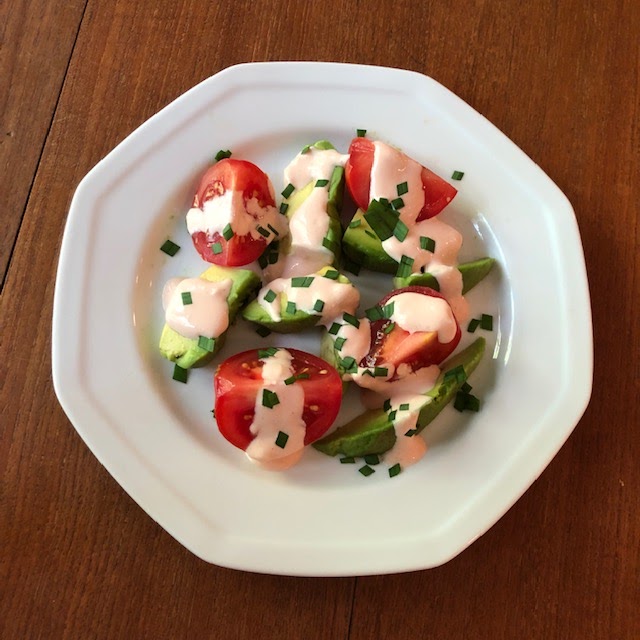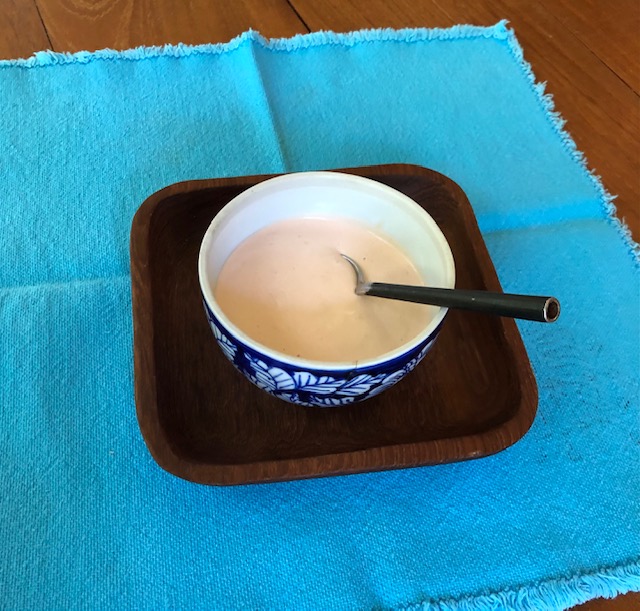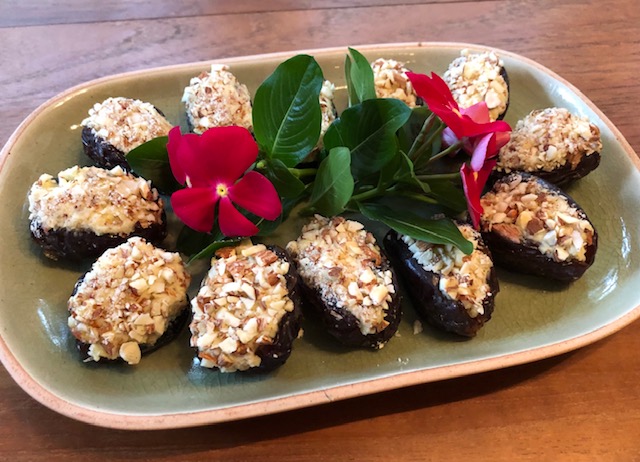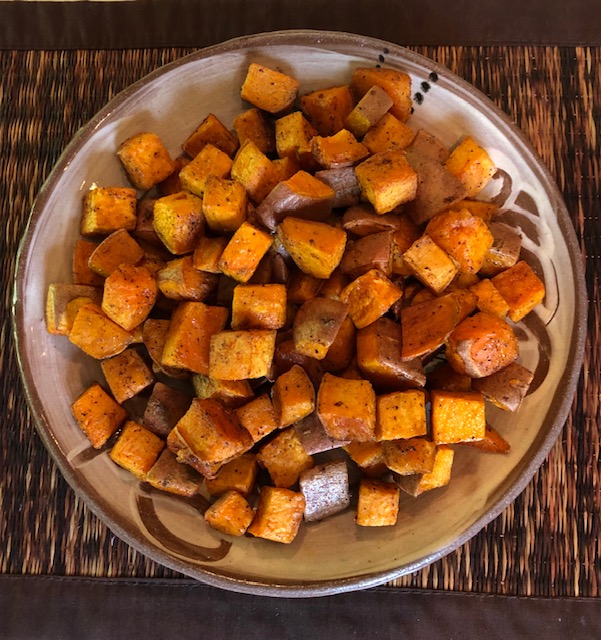Teriyaki Salmon -- with Gluten-Free Option
Teriyaki, a traditional Japanese cooking method primarily
used for fish, literally means shiny and grilled or broiled. In other Asian
countries, similar methods, though with other names, are also used and are
applied to chicken and pork in addition to fish.
Soy sauce is essential for the teriyaki seasoning. A Japanese
soy (such as Kikkoman, which is readily available in the US) or Korean soy have
the appropriate flavor. Most soy sauces include wheat, and therefore gluten, in
their fermentation process. People who must avoid gluten can get a gluten-free
equivalent sauce, such as a Japanese “tamari,” which also gives the right
flavor.
The
recipe serves four, accompanied by rice and a stir-fried vegetable. The fish
can be served hot for dinner, or at room temperature as part of an appetizer
buffet.
1
pound piece of salmon fillet
2
tablespoons soy sauce, preferably Japanese or Korean, or gluten-free tamari
1-1/2
teaspoons sweet rice wine or “Mirin” (substitute is dry Sherry)
1 teaspoon rice vinegar or white vinegar
1
tablespoon sugar
1/2
teaspoon cornstarch
3/8
teaspoon salt
3/4
teaspoon grated fresh ginger
1/4
teaspoon Asian sesame oil
1 teaspoon canola or sunflower oil
Some thinly sliced green onion tops or chives for garnish
Wipe
the salmon piece with paper towel. If the salmon still has skin on it, remove it
by placing the salmon skin side down on a cutting board and with a sharp knife
cutting a quarter inch into one end of the fish between the skin and the flesh.
Then holding the skin down with your fingertips, slice along the skin to free
the flesh from the skin.
Combine the remaining ingredients, aside from the green onion
or chives for the garnish, and stir well. Marinate the fish in a flat-bottomed
container for several hours, occasionally lifting the fish a little to get
marinade under it and spooning marinade over the top.
Heat the oven to 375 degrees. Place the salmon on a baking
sheet. Drizzle a little of the marinade over the salmon and discard remaining
marinade. Roast 14 minutes on an upper rack. If the surface is looking cooked,
test by sticking the tip of a small sharp knife into the fish with the “grain”
and twist the knife gently to see if the raw color is almost gone. If not,
roast another 2 minutes and test again. Do not overcook.
Teriyaki
salmon can be eaten hot or cold. Platter the fish and sprinkle lightly with
sliced green onion top or chives.
































.jpg)
.jpg)






